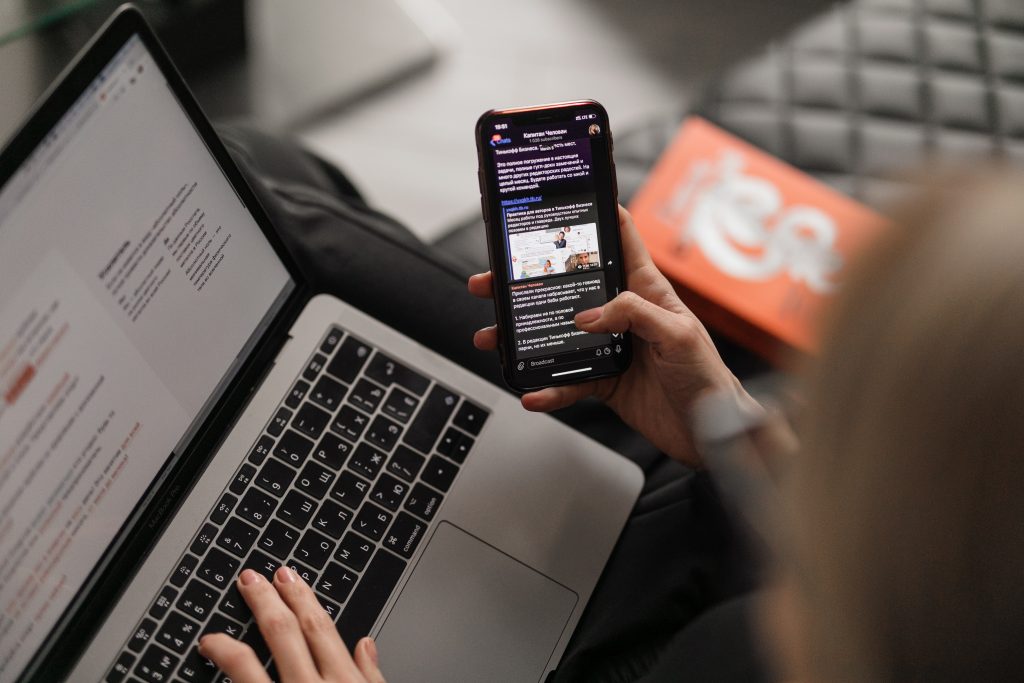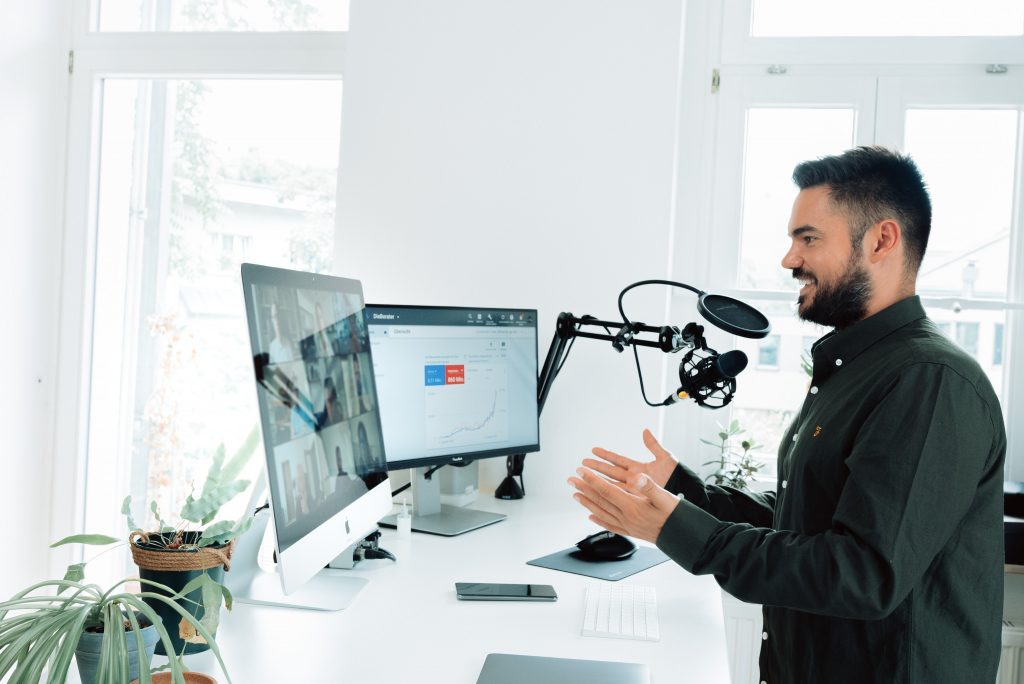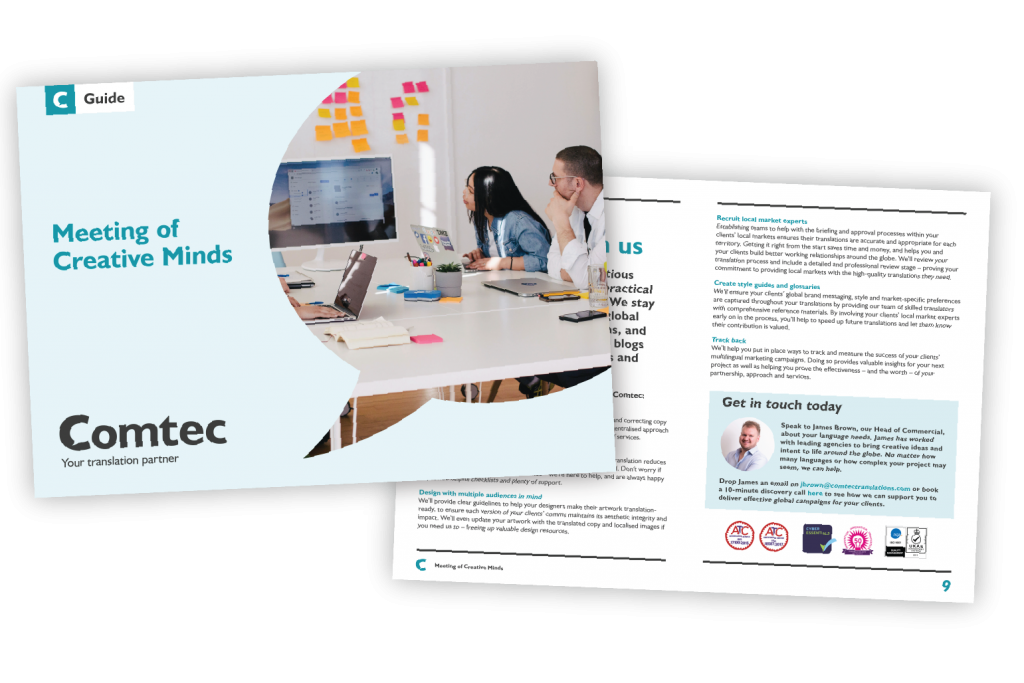We’re proud to work with brilliant and ambitious international clients at Comtec. One such client is Merkle, a leading technology-enabled, data-driven performance marketing agency. Operating from more than 50 offices around the world, Merkle support a large panel of B2B & B2C brands to build and execute customer-centric business strategies. They are an approved Google partner that helps brands transform their marketing into people-based marketing that gets results.
One area of Merkle’s business that we find particularly interesting is its International Growth Consultancy. As you know, a core part of our work is using translation and localisation to help unlock global expansion for our clients; that’s why we were excited to sit down with Mylène Curie, the Senior Lead of International Excellence, and pick her brain on what it takes to go global. Mylène is highly experienced at helping companies of all sizes maximise the benefits of international growth and has been working with Comtec for around two years on a variety of marketing and growth projects for Merkle’s internal team and their clients. In this interview, Comtec’s Head of Commercial, James Brown, discusses with Mylène the role language plays in international expansion and how investing in translation and localisation impacts the success of global growth.


James Brown: Hi Mylène. Thank you for your time. I’m really looking forward to speaking with you about the importance of localisation in the realm of digital marketing and how investing in translation and localisation and partnering with the right customer experience and translation agencies to support you can deliver great results for your business and add value for your clients. But first, to begin, let’s discuss localisation as a concept.
JB: What’s the importance of localisation for international business growth?
Mylène Curie: Localisation still is the number one growth barrier for companies looking to enter new markets. Companies that embrace language opportunities & develop performance linguistics can support an effective international growth strategy. You need to go far beyond standard translations these days and approach content strategically – Deploying a localisation strategy that fully integrates into your business plan is how you can realise your market ambitions. Best-in-class translation and language expertise are an essential piece of the go-to-market puzzle – a one size fits all approach will almost certainly lead to failure. Translation partners should operate as extensions of your team: embedding translation and strategic localisation into your business plans will effectively support your market readiness initiatives. Understanding cultural preferences, linguistic, emotional and creative lens, involves the proper use of style, tone, syntax, punctuation, special characters, imagery, numbers and colours. All types of communications and content need to be handled in a way that resonates well locally. Having the local market knowledge and nuance is critical to success – for instance, the use of certain colours, visuals, animals can offend. Each word needs to be carefully chosen and each cultural reference checked for appropriateness. Working with native speakers helps you build that trust, and position your brand accurately. Specialist proofreading services can also act as a safety net. Rigorous QA processes will ensure exceptional quality, regardless of where your customers sit in their international journey, and their readiness to convert.
Let’s take a look at some stats.
Only 23% of the Spanish population speak English fluently, and the numbers aren’t much higher in Italy (35%) or France (39%). Those looking to trade even further afield encounter even greater challenges. Despite English being the most popular language in the World, less than 0.75% of the Chinese, 5% of Brazilians and 5.2% of Russians can speak it fluently. Localisation, therefore, is a vital component of any international business plans.
JB: There has been a huge quantitative research project taking place within our industry in the last few years about how languages, translation and localisation can be key drivers for export success. It was revealed earlier this year in a report titled ‘LO-C 30’ that was published by the Association of Translation Companies and Aston University that UK SMEs investing in language capabilities are 30% more successful in exporting than those who do not. That just shows how much potential there is for businesses to harness the power of localisation.
JB: When it comes to digital marketing on an international scale, how fundamental is having a localised website?
MC: Having a properly localised website is a great foundational start to your international growth journey, but your website should also be designed for globalisation – For example, have your meta tags, slogan, logos, graphics, images, buttons and navigational elements also been localised, to maximise impact? Have you considered all mobile responsiveness best practices? Cross-border trade, in a post-Brexit environment, has become more complex, and requires solidified content – Checkout processes for example need to align with in-market nuances and preferences. For example, web users are four times more likely to purchase from a website that communicates in their native languages.
Off the back of that, have you implemented customised landing page strategies? International SEO can easily be pushed on the back burner, however, this is a vital piece of your journey, as it creates exposure – for example, having the most-searched-for keywords in the target language meta-descriptions can help your brand gain competitive advantages.
JB: There are a couple of famous statistics that show the benefits of localising your website, that I’m going to share with you now. First of all when it comes to e-commerce, nearly 50% of global consumers say they won’t buy from websites that aren’t in their language.
Additionally, 75% of respondents in CSA’s research say that they’re more likely to purchase the same brand again if customer care is in their language. So these stats prove that by targeting an international audience you can potentially massively increase your customer base.
And beyond just translating the text on your website, it’s also really important to have in place a strategy for how you will handle international enquiries and leads coming through your new localised website. This could be through recruiting native-speaking sales team members, having sales material readily available in their language, maximising the use of your CRM or by localising website chatbots, there are absolutely loads of options.
JB: What are the benefits of localisation in the context of digital media?

MC: Connecting the dots, across all touchpoints, is how you can articulate the end-to end customer journey and deliver a seamless CX at scale. A fragmented approach will likely impact your customer’s intent and brand performance further down the line.
Instead, your communications should be strengthened and unified to ensure your message is delivered both consistently and accurately, across all channels, collaterals, languages and geographies.
For that reason, International marketing localisation services span across multiple disciplines, such as transcreation, video, subtitling & voiceover, multilingual keyword research, CMS integration, eLearning modules, in situ reviews, augmented reality app types of translations, and so on.
For example, your Paid Social and Display assets need to be highly targeted to the target audience of course, but they also need to be highly motivational, contextually and emotionally relevant to your target market – This is when transcreation comes into play. Transcreation adapts the essence of your messaging to align with the target market.
Multilingual copywriting on the other hand focuses a lot more on the brief and creative side of your project, and strays away from the source content: in some cases, producing original content is how you can effectively enter a market and reach a pool of relevant audiences – Including for more niche industries.
You should therefore consider the wider spectrum of language services when deploying your go to-market strategies, particularly when it comes to digital marketing content. Delivering a successful multilingual marketing campaign involves the highest standards of translations, powerful content, and customised assets. All this needs to be contextualised against the target market. Your positioning, tone and tactics all need to align with the local audience. Thinking locally is key to growing globally. This is how you can effectively engage with new audiences and drive transformative results.
JB: From a translation and localisation perspective, it’s always so important to consider the end usage, the target audience and the emotional impact you’re looking to generate when approaching any piece of digital marketing content.
We like to liaise with our clients to understand what they are trying to achieve from the content, but also how this ties into their wider goals for that campaign or their business. The deeper we can dig and the more insights we can receive, the better!
This then allows us to recommend the right level of localisation and transcreation for that specific project. You’ll often find some assets require a more faithful translation approach. Advertising content, on the other hand, might require a high level of creative adaptation and transcreation and SEO keywords of course require detailed research and localisation to identify the most appropriate terms that users in each market are searching for. There is no one size fits all approach when it comes to translation and localisation, which of course makes it a very fascinating industry to work in.
JB: How can businesses measure the success of each of these approaches to understand the ROI?
MC: Your language strategies need to demonstrate value, in line with your international growth objectives and business trajectory – by delivering a tangible return on content management results for example. Translation KPIs need to be factored into your go-to market plans and benchmarked against your business objectives, to validate the success of your localization initiatives.
Success may translate into an increase in page views, incremental revenue, share of voice; It may also be measured against broader metrics, such as speediness of new content delivery and faster go-to-market times.
As key drivers of performance, multilingual content strategies need to drive measurable impact and align with your go-to-market roadmaps and KPIs. Investing in language capabilities can significantly increase your export sales and growth.
JB: Putting in place some of the KPIs you’ve mentioned looking at the knock-on effects of translated content are really easy ways of measuring success. And this is also really useful feedback to share with your marketing and translation partners to initiate a feedback loop and ensure that everyone is working together to deliver the results you’re looking for. We would also recommend looking at broader measures as well, for example, feedback from your local market teams regarding the volume or type of changes they are having to make. The fewer the changes, the more productive your local teams can be, which means faster time-to-market for your content and products.
JB: When it comes to localising digital marketing content, what should businesses look for in a translation partner?

MC: Taking a fully collaborative and brand immersive approach is key in driving a rewarding partnership. As mentioned before, translation partners should operate as extensions of your team. Linguists are expected to develop a thorough understanding of the vision, values, objectives and preferred communication styles for your brand. In other words, you need to ensure your language service provider is a good fit for your business, with the relevant sector experience, and marketing translation expertise – ideally, you should work with a provider that has supported organisations at your stage of global growth so you can use their experience to your advantage. Linguists also need to be a good fit culturally as you’ll want them to feel like an integral part of your team. Robust linguistic competencies and high cultural intelligence are key components of successful export strategies.
Your translation partner needs to combine a high level of industry specialism with an in-depth understanding of local advertising regulations, media restrictions and opportunities as well as challenges in activating international marketing campaigns. In other words, they need to make languages work for your organisation, in the context of your media definition of value.
Through a solid grounding in SEM and SEO for example, linguists understand the scope and function of the assets they create, thus resulting in a commercially effective partnership. Tools such as Google Ads Keyword Planner, Semrush, Ahrefs, can help you and your linguistics act for impact.
JB: Finding a translation partner with direct experience in your industry is really helpful. We also recommend looking out for companies with ISO quality certifications, which means that the translators they work with must have specific qualifications and are hand-picked for your projects based on their specialist experience. It’s also really important to check that your values align and you’ll be able to collaborate effectively with their team, which is so important when handling digital marketing content. Look for a partner who is willing to get stuck in and offer solutions and recommendations to improve the process. For example, we have recently proposed various options to improve the briefing process for particularly complex transcreation and copywriting projects. One solution involves Merkle, Comtec, our linguists and the client having a kick-off meeting together, to ensure that all parties receive a detailed briefing and are all on the same page. We were thrilled to see that this not only ensured that our linguists translated more closely to the client’s specific requirements, but that the project ran much smoother from an organisation perspective having had all key stakeholders in the same room, so to speak.
JB: How can businesses collaborate with their translation partners to build a successful partnership and ensure they are meeting their business objectives?
MC: Staying authentic to your business identity whilst still fine-tuning content to be locally and strategically relevant to each market, requires expertise. Connecting with your customers through a localised website and communications that completely align with your Brand vision, perceptions, and reputation is no small task. Proper use of glossaries and style guides for example can help validate your company’s preferred terminology, maintain your brand integrity and deliver consistent messaging at scale. It’s not just about you communicating your brand value most accurately. It’s about making your content intelligible to the audience of your target market and truly engaging with your customers worldwide. Your translation partner should also leverage the use of tech to streamline the translation workflow – for example, the use of cutting edge translation management systems and translation memory tools, can scale up activity, improve turnaround times and reduce cost further down the line.
Taking a responsive approach to localisation is also key to success – Linguists often have to deliver at scale whilst still working towards the tightest deadlines – Human expertise, combined with the proper use of machine intelligence and language technology solutions, empowers linguists to deliver at speed, whilst still maximising creative performance across the globe.
JB: Speaking from Comtec’s perspective, the partnership we’ve developed with Merkle is one that we are proud of. From the very beginning, working together has felt like a true partnership, never a transactional supplier-client relationship. The fact that Merkle truly appreciates and champion the importance of localisation, particularly in the context of ensuring a seamless customer experience, is one of the key factors that makes our partnership so successful. One thing we appreciate is that we have always been invited to collaborate with you and your clients to offer suggestions, advice and best practice and I think by working so closely together we’ve identified how much both Merkle and Comtec believe in delivering the very best customer experience. Our rigorous QA measures also align with Merkle’s own internal QA steps, ensuring that digital content is localised and optimised across all languages to generate the best results for our clients. Finally, the success of our partnership with Merkle is underpinned by the value match that we share. At Comtec, we pride ourselves on being an innovative and forward-thinking company that puts the customer at the heart of everything that we do, and it is very clear that these are values that are shared by Merkle.
Mylène, thank you so much for taking the time to speak with me today. You have shared so many useful insights that will no doubt encourage businesses to supercharge their international growth journeys by incorporating localisation effectively into their digital marketing strategy.
If you have any queries regarding international marketing you can get in touch with Mylène and her team at marketinguk@merkleinc.com. For any translation and localisation queries, you can reach the Comtec team at info@comtectranslations.com.

